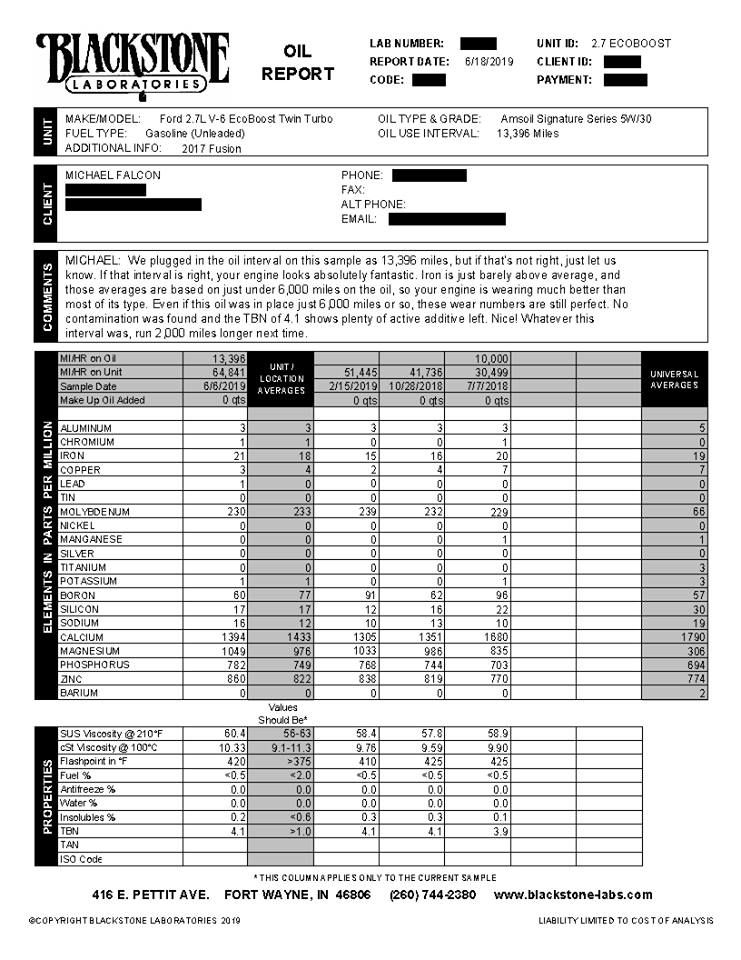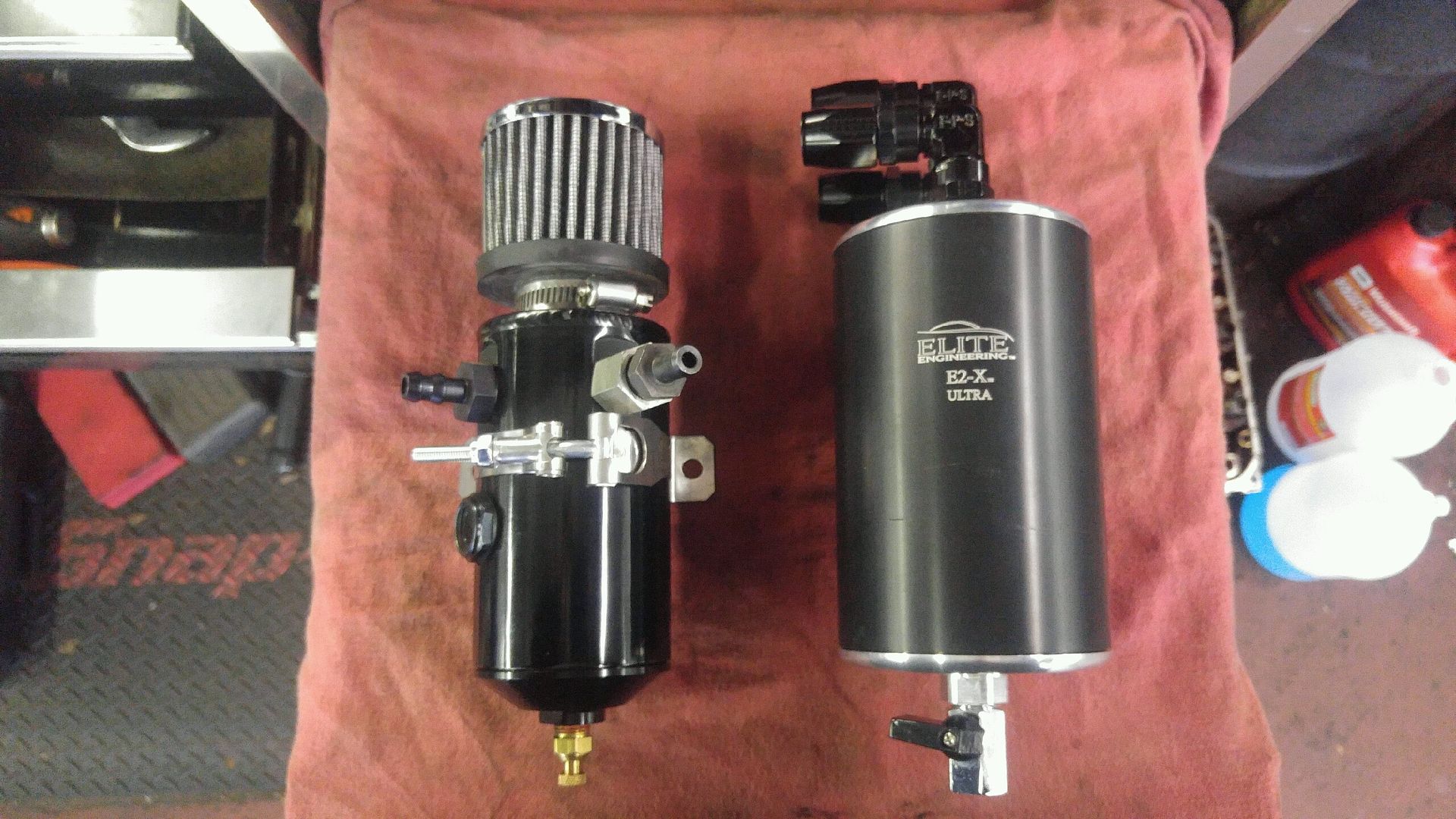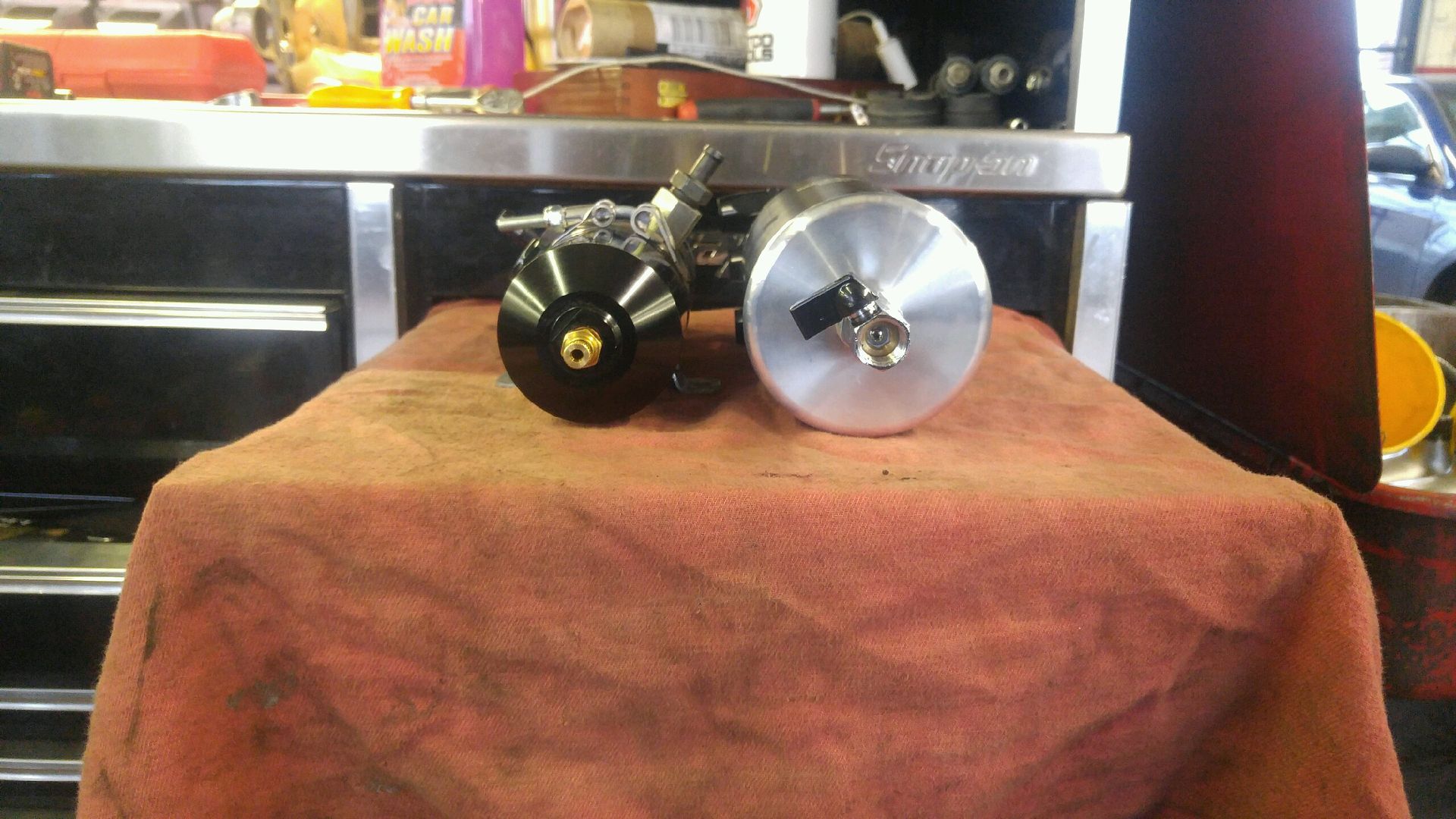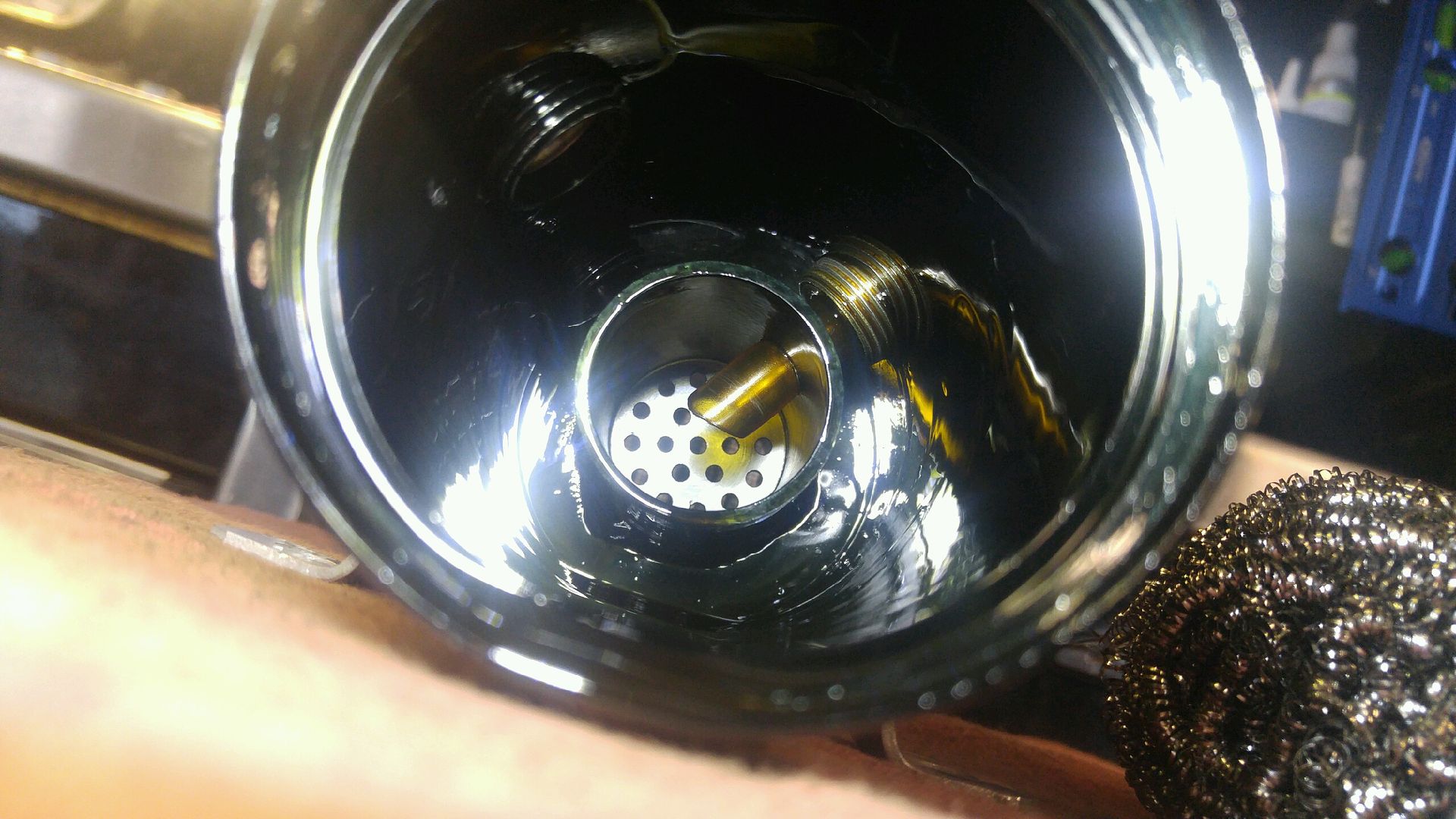You are browsing camaro6 

|
|
#183 | |
|
Coupe Newbie
Drives: 2017 ZL1, 2021 Corvette Convertible Join Date: Jul 2011
Location: Columbus, Ohio
Posts: 3,279
|
Quote:
As far as a dealership touching your car, I must be lucky because I take all my cars to the dealership for service. I've never had an issue with workmanship or the way my vehicles are treated. I recently had my '15 Silverado at the dealership for an intake cleaning. Truck runs great and the cost was about the same as an E2 catch can. I did have a catch can on the truck when I first got it but got tired of having to empty it every 2 weeks during the winter because of condensation so I removed it.
__________________
 |
|
|
|

|
|
|
#184 | |
         Drives: 2016 Challenger Hellcat, 2018 ZL1LE Join Date: Dec 2009
Location: Northern NJ
Posts: 3,003
|
Quote:
As for dealership service, you indeed are one of the lucky ones my friend. Bless you if youíve found a dealership that takes good care of you and your cars. They are an extreme rarity in todayís car culture. I donít need to give examples of how bad most dealerships are, weíve all heard the horror stories.
__________________
2016 Challenger Hellcat /B5 blue/Sepia interior/Brass Monkey Wheels/
2018 ZL1 1LE/Red hot 2019 Shellby GT 350R/ Oxford white/ Matte Black Stripes/ Carbon Fiber Dash/ Electronics Package #413 |
|
|
|

|
|
|
#185 |
    Drives: 19 Z06 Join Date: Nov 2011
Location: Oakville Ont.
Posts: 1,427
|
I have put a catch can on all my vehicles because I never really know how long I'm going to keep them.
__________________
Gone but not forgotten:
1974 Corvette Stingray 454 1986 Z28 2009 Mustang GT convertible 2012 45th 2SS Vert 2013 ZL1 M6 2014 Zl1 M6 2014 GT500 2016 Challenger Hellcat M6 www.youtube.com/c/garageking  |
|
|

|
|
|
#186 |
 Drives: Chevy Camaro ZL1 Join Date: Apr 2020
Location: Florida
Posts: 95
|
Fellas,
This has been a great thread with many knowledgeable guys weighing in on it. I’ve learned a lot about the subject as well as some unpleasant scenarios from broken and overpriced bolts to some very poor after-sales support. The following is posted out of my own ignorance on the subject and that no one else seems to have brought up the durability of synthetic oil in a DI engine. It seems that the biggest reason FOR a CC is to avoid having oil entering the induction system and fouling intake valves over time. Considering the advanced properties of the synthetic lubricants we use, is it reasonable then to expect that coking, gunk or sludge are not going to happen? It’s one thing to find some oil under the cover, it’s another to find valves that have actually been contaminated to the point where performance has been degraded. Has anyone with an LT4 without a CC experienced performance degradation due to contaminated intake valves? Also, would not a small amount of oil going through the top-end of the motor actually be a good thing? TIA Chris Last edited by Chris 2018 ZL1 A10; 04-18-2020 at 09:03 PM. |
|
|

|
|
|
#187 |
   Drives: 2020 Zl1 A10 Riverside Blue Join Date: Mar 2020
Location: NJ
Posts: 1,218
|
This thread has some great Information I know that there are disputes regarding catch can and what brands,but I'm wondering if there is a difference between the elite and Mighty Mouse. I see that MM has different horsepower rating and also plug the PCV. I'm looking to be around 750ish 800 hp . I dont want to blow out any gaskets so what is the deal with elite using the pcv port and mighty mouse venting to the atmosphere?
|
|
|

|
|
|
#188 |
 Drives: 2018 Nickey stage 1 ZL1 a10 Join Date: Oct 2019
Location: WI
Posts: 20
|
Did alot of research on this before pulling the trigger. I don't think you can go wrong with the MM or the Elite.
I will say one thing, I went with the MM. While it is a nice system the installation instructions SUCKED. |
|
|

|
|
|
#189 |
     Drives: 2010 Camaro Join Date: Nov 2009
Location: Denver
Posts: 1,381
|
20Bluezl1,
The differences between the MM and the Patented Elite E2-X are many. So lets go down each point: 1. MM can traps less than 50% of what enters it allowing the rest to still be ingested. The patented design of the E2-X traps 95% plus in most cases. So if this is the reason for choosing a can, no comparison. 2. E2-X dual valve provides full time evacuation. MM allows pressure to build and vent vs E2-X pulling suction at all times so pressure can never build to begin with. 3. The flushing and evacuation of the E2-X keeps your engine oil cleaner longer, and wear is greatly reduced. Here is an extended oil drain example. Read the lab techs notes. No other system design does this:  4. E2-X retains a closed emissions compliance system, but not yet approved for CA use. 5. The standard E2-X Ultra is good for boosted applications to 600 hp. Above to over 1000hp the E2-X Ultra is twice the capacity:    6. Both systems, MM and E2-X make it impossible to blow a seal or other issues caused by pressure. More questions? Just ask, but don't take our word for it, conduct the catchcan test of our system installing ours AFTER the MM in series starting with both clean and oil free. Drive 1000 miles and drain both and document. You will see E2-X design traps as much or more AFTER those vapors got past the first can. Now clean both of all oil and reverse so E2-X is first in line and MM second. Drive same miles and duplicate the same driving style. After 1000 miles drain and see the MM only traps drops that get past the E2-X. No games, no hype. Pure and simple validation done by yourself with no games. Ask any questions you may have. Cheers! |
|
|

|
|
|
#190 | |
 Drives: Chevy Camaro ZL1 Join Date: Apr 2020
Location: Florida
Posts: 95
|
Quote:
Can you answer any of the questions I posted two days ago? In short, whatís so detrimental about a very small amount of synthetic oil (Now with ESP) being re-introduced into the top-end of the motor? How many LT4ís without a CC have you seen that have suffered any type of performance degradation due to an intake system that has been fouled by oil? Thank you in advance for your response, Chris |
|
|
|

|
|
|
#191 | |
 Drives: 2018 Chevrolet Camaro ZL1 1LE 6MT Join Date: Jun 2019
Location: Scottsdale, Arizona
Posts: 89
|
Quote:
__________________
2018 ZL1-1LE
Rotofab, Ported TB, 2.3 Pulley, ATI balancer w DSX 9.06 Lower ring, LME heads, 2" Kooks, custom cam, DOD Delete, Cordes Low side fuel system, Flex Fuel Kit, MM Catch can, ZL1 addons tow hook, ZL1 addons rock gaurds, Diode dynamics blacked out side markers |
|
|
|

|
|
|
#192 | |
 Drives: Chevy Camaro ZL1 Join Date: Apr 2020
Location: Florida
Posts: 95
|
Quote:
Consider this: We trust 10 quarts of the most advanced synthetic engine oils ever made to properly lubricate the many rotating/reciprocating parts of our engines AND to do it during conditions of sustained high rpm/heat/pressures as well as temperature extremes without breaking down into carbon, sludge or gunk. Therefore, is it not reasonable to expect that a few tablespoons of engine oil accumulated over 2-3K miles of driving would NOT adversely contaminate ANY part of the induction system? Is it possible that Chevy considers it desirable to have a small amount of engine oil cycle through the top-end? Chris |
|
|
|

|
|
|
#193 | |
     Drives: 2010 Camaro Join Date: Nov 2009
Location: Denver
Posts: 1,381
|
Quote:
Hi Chris, Sorry we did not see those questions, but very easy. Especially with a LT4 as it is supercharged so cylinder pressures are pretty extreme when combined with GDI engines higher CR, 10:1 in the LT4 engine VS 11.5:1 in the LT1. So, we look at the combustion process and what occurs with ANY oil entering the combustion chamber and ending up as part of the A/F mixture. Oil in any amount present will cause pre-ignition, or "knock". The more oil present, the worse the pre-ignition and to protect the engine, the knock sensors will detect this and pull timing advance down to a level that meets the settings in the tune and then adds it back slowly if no more is detected. As there will always be some present if oil is present. Simple fact with any GDI engine, and the LT4 is all the more sensitive to knock retard due to the added pressures from the blower. So that is a biggee. Fuel economy and power both degrade if the engine is not running at optimum timing advance. Next is the intake valve coking. A full syn oil will result in a slower rate of deposit formation, so that is important, but this is well documented in the before and after dyno runs, etc. showing even a small amount of deposits totally changes the shape and flow characteristics of the charge air entering the combustion chamber. An immense amount of research and development goes into today's engines as far as valve shape, size, texture, and more. So to allow these deposits to grow will gradually degrade the efficiency. The coking never builds equally, so the valves with the most severe that cylinder will run rich as air in is restricted so it wont be equal to the others. The ones with the least will run leaner than the rest. Why? The upstream O2 sensors will read each bank as an aggragate and the ECU will command equal fuel delivery to each cylinder in that bank, so the worse the coking, the more disparity. Final, and this is also a biggee, is in order to combat and slow the valve coking issues (which any long term members should remember our debates with Tadge years ago on this subject as he stated there was NO valve coking occurring with these new engines, and we and other showed pictures of severe coking as did many others in the industry. Shortly after they introduced the Factory cleanside separators as standard on the Camaro V8's "in order to combat intake valve coking issues" that they claimed did not exist before. And that is the amount of contaminates the engine oil is bombarded with in these engines. As fuel is introduced directly into the combustion chamber milliseconds before spark ignition, the injectors operate at 1,000-3,000 PSI plus vs the LS engines at 55-58 psi range. So 8-12 times the raw fuel is forced between the pistons and cylinder walls. This not only washes protective oil film off from these surfaces, it also dilutes the already far too thin of viscosity oil (again a memory reminder, we have warned about the consequences of super thin oils specified in these for the sole purpose of meeting CAFE fuel economy standards and engine failures would be the results, and yes, after a rash of failures GM releases a update to use the 0w50, etc. we were suggesting) so the oil quickly becomes to thin and diluted to protect. Now, back to the Factory cleanside separator. GM made several improvements related directly to combating the coking, and in doing so have traded off engine longevity. Many have noticed GM cut engine warranties in half basically from the LS at 100,000 miles to these new engines at 60k or less. this is to shield them from the liability of warrantying these for longer. So, along with the fuel dilution, the coking on the valves bakes into a very hard crystalline structure that is as abrasive as sand in some cases. As these shed, even though most is expelled out the exhaust, some is also forced between the pistons and cylinder walls, and enters the crankcase as blow-by. This also overloads the engine oil with the soot/ash/carbon that causes most internal engine wear over time. GM slowed the oil ingestion in several ways. One is the factory CSS, which addresses the 10-15% of oil ingested via the cleanside of the PCV system,vs 85-90% through the dirty side which they have not addressed yet, but, as most would never empty them, they have it drain back into the crankcase. And this is what is returned on average: https://hosting.photobucket.com/albu...ps00uz5ozd.jpg This is 70% water and acids, 23% raw fuel, and 7% is oil saturated with abrasive particulate matter. So that being reintroduced to the crankcase most can understand the accelerated wear associated with what used to be evacuated and removed is now left in to contaminate and overwhelm the oil. How does the E2-X system address this? As it converts the PCV system to full time evacuation, it is constantly flushing and removing these as this oil analysis shows at over 13k miles oil stays cleaner longer and engine wear is greatly reduced. Please note the lab techs comments:https://hosting.photobucket.com/albu...ps7l9mvzrs.jpg This should answer your questions. If you want more data such as the dyno sheets and further oil analysis were happy to share that. We understand there are some that could care less as they are trading soon and have no qualms about passing this on to the next owner to deal with, and that's the car owners choice. But these are for those that do care for their car and consider it a special investment they wish to care for the best possible. And further, out of ALL the "catchcans" for sale on this forum, we are still the ONLY one that takes the time to participate in technical and educational discussions. All others decline and just take the "buy it because I say so" stance. NO other company has done more research and worked with more related companies in the industry in on going testing and development. And we stand by the challenge to test against ANY other can design. Questions? Ask them, and we ask you keep it all technical. If you are so dead set against installing a purpose built system like ours, bay all means don't. But to always attack us for sharing actual data and facts and industry results makes no sense. Ignore these if you choose, but leave the rest alone. As a supporting vendor that has been here since the beginning, these sites can't exist if you drive us away with the constant attacks. So we ask just ignore these technical discussions. Cheers!! |
|
|
|

|
|
|
#194 |
   Drives: 2020 Zl1 A10 Riverside Blue Join Date: Mar 2020
Location: NJ
Posts: 1,218
|
Quote:
Originally Posted by Elite Engineering View Post 20Bluezl1, The differences between the MM and the Patented Elite E2-X are many. So lets go down each point: 1. MM can traps less than 50% of what enters it allowing the rest to still be ingested. The patented design of the E2-X traps 95% plus in most cases. So if this is the reason for choosing a can, no comparison. 2. E2-X dual valve provides full time evacuation. MM allows pressure to build and vent vs E2-X pulling suction at all times so pressure can never build to begin with. 3. The flushing and evacuation of the E2-X keeps your engine oil cleaner longer, and wear is greatly reduced. Here is an extended oil drain example. Read the lab techs notes. No other system design does this: [URL=https://app.photobucket.com/u/tech17/p/60d49a5d-3f03-4230-8dd6-a5758ff6957b][IMG]https://hosting.photobucket.com/albums/j392/tech17/.highres/Falcon%20long%20term%20testing 4. E2-X retains a closed emissions compliance system, but not yet approved for CA use. 5. The standard E2-X Ultra is good for boosted applications to 600 hp. Above to over 1000hp the E2-X Ultra is twice the capacity: 6. Both systems, MM and E2-X make it impossible to blow a seal or other issues caused by pressure. More questions? Just ask, but don't take our word for it, conduct the catchcan test of our system installing ours AFTER the MM in series starting with both clean and oil free. Drive 1000 miles and drain both and document. You will see E2-X design traps as much or more AFTER those vapors got past the first can. Now clean both of all oil and reverse so E2-X is first in line and MM second. Drive same miles and duplicate the same driving style. After 1000 miles drain and see the MM only traps drops that get past the E2-X. No games, no hype. Pure and simple validation done by yourself with no games. Ask any questions you may have. Cheers! Not sure why I cant see the post that Elite responded to,maybe he deleted it. My question to elite I quote "The standard E2-X Ultra is good for boosted applications to 600 hp. Above to over 1000hp the E2-X Ultra is twice the capacity" I'm kind of confused is the E2-X good to 600 and the ultra to 1000? What size hoses should you use with the ultra? |
|
|

|
|
|
#195 | |
         Drives: 2016 Challenger Hellcat, 2018 ZL1LE Join Date: Dec 2009
Location: Northern NJ
Posts: 3,003
|
Quote:
It is due to the process of combustion that there is carbon build up on the back of the intake valves. So you can use the best formulated oil and I strongly believe you will still get gunk on the back of the valves. There is no fuel being injected into the back of the valves to wash anything off like there is in port injected engines. My Hellcat has 13,000 miles, I just took the supercharger off this Sunday to do some work and the intake valves were spotless, that car is port injected. With that being said, I still put a catch can on it last year. Itíll help the car breathe better and cleaner air. Itís $300-$400 of peace of mind. And that is coming from a cheap guy lol. If you plan on keeping your car for a long time, itís worth putting the catch can on it. Especially the Zl1, since itís Direct Injected.
__________________
2016 Challenger Hellcat /B5 blue/Sepia interior/Brass Monkey Wheels/
2018 ZL1 1LE/Red hot 2019 Shellby GT 350R/ Oxford white/ Matte Black Stripes/ Carbon Fiber Dash/ Electronics Package #413 |
|
|
|

|
|
|
#196 | |
 Drives: Chevy Camaro ZL1 Join Date: Apr 2020
Location: Florida
Posts: 95
|
Quote:
Thank you for your response. Yes, the LT4 due to its DI design, means the backside of all intake valves are being exposed to a very small amount of engine oil due to the necessity of having a PCV system. The proponents of CC’s seem to be making the assumption that those oil particles that do encounter an intake valve will STAY there, turn to carbon and create other problems over time. My assumption is that considering the velocity with which air is traveling over the intake valves, especially in a forced induction engine, will NOT result in any oil particles remaining there very long. Even if they did, the amount of air moving through that part of the engine at that velocity, should be more than enough to sufficiently dissipate the heat of combustion preventing carbonization, especially considering the ability of today’s synthetics to resist degradation. If the thin film of oil that lubricates the cylinder walls can withstand the heat, isn’t it likely that oil on the back side of an intake valve, presumably a cooler location, can survive for the short time it’s there before ingestion as well? Again, during the design process, is it possible that Chevy engineers actually considered a very small amount of oil being re-introduced into the top-end of the motor a good thing? If so, a CC would then have to be considered a detriment to the well-being of your engine. Until such time as irrefutable proof can be demonstrated under reasonably controlled conditions, I believe that a CC has little more than placebo value. Chris Last edited by Chris 2018 ZL1 A10; 04-22-2020 at 04:04 PM. |
|
|
|

|
|
|
|
|
|
Post Reply
|
|
|